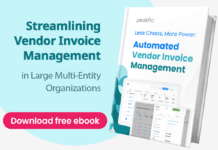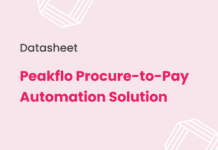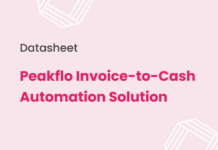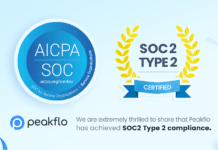Running a business means dealing with regular costs every month. These include rent, software subscriptions, and employee wages—your recurring expenses.
Recurring expenses are the consistent costs that keep your business running. They cover everything from utilities to payroll. While they may not surprise you, their overall impact can add up over time.
In this guide, we will explore everything you need to know about recurring expenses. You will learn how to identify, categorize, and budget for them. This will help you make smarter financial decisions and avoid unexpected problems.
What Are Recurring Expenses?
Recurring expenses are the regular and predictable costs that keep your business running. You can plan for them, set a budget, and pay them on a set schedule—whether it is weekly, monthly, or annually. These expenses are the foundation of your operations, helping your business function smoothly without interruptions.
Difference Between Recurring and Non-Recurring Expenses
Now that you understand recurring expenses, it is important to know how they differ from non-recurring costs. Both types affect your financial planning, but they impact your budget in very different ways.
| Characteristic | Recurring Expenses | Non-Recurring Expenses |
| Frequency | Regular (weekly, monthly, annually) | Irregular or one-time |
| Predictability | Predictable and consistent | Unpredictable and often unexpected |
| Impact on Budget | Smaller, constant drain on resources | Larger, significant, but infrequent |
| Examples | Rent, Utilities, Salaries, Subscriptions, Insurance | Equipment purchases, Office renovation, Legal fees, Marketing events |
| Planning Strategy | Easier to budget for due to regularity | Requires setting aside contingency funds |
Why the Difference Matters
Understanding this difference is important. Recurring expenses are easier to manage because they are predictable. Non-recurring expenses, however, need planning and flexibility. It is crucial to set aside part of your budget for these surprises. If you do not, unexpected costs could disrupt your cash flow and leave you unprepared.
10 Most Common Examples of Recurring Expenses for Businesses
Let us go over some common recurring expenses that most businesses deal with. While each business has unique costs, these expenses show up across many industries.
Here are ten of the most typical recurring expenses:
- Rent or Lease Payments
Rent is a regular and important cost for businesses. It covers the space you use, like offices, warehouses, or stores.
- Utilities
Services like electricity, water, and the internet are needed to keep things running. These costs are usually the same each month.
- Employee Salaries and Wages
Paying your staff is a key expense. This includes their wages, taxes, and benefits like health insurance.
- Insurance Premiums
Businesses need insurance to protect against risks. These include property, liability, and workers’ compensation policies.
- Loan Payments
If you have loans for equipment or property, repaying them is a regular part of your budget.
- Software and SaaS Subscriptions
Most businesses use cloud-based tools for things like accounting and customer management. These are billed monthly or yearly.
- Maintenance and Repairs
Keeping equipment and offices in good shape costs money. This includes things like machine servicing and IT support.
- Marketing Subscriptions and Services
Running ads, email campaigns, or social media tools also counts as a recurring expense.
- Office Supplies
Even in the digital age, businesses still need supplies like paper, ink, and cleaning products.
- Taxes
Whether it is property, payroll, or income taxes, these are recurring costs that businesses must handle.
Tracking these costs helps ensure your budget reflects the true cost of running your business.
Managing and Budgeting for Recurring Expenses
Now that you know about recurring expenses and some common examples, the next step is learning how to manage them. Organization and the right tools are key here. When you manage recurring expenses well, your cash flow stays steady, and you avoid unexpected costs.
1. Importance of Organizing Expenses for Better Control
Once you identify your expenses, it is time to organize them. When your expenses are organized, you have better control of your finances, and fewer surprises arise. Breaking them down into categories like fixed, variable, or by department allows you to:
- Ensure that all necessary expenses are paid on time.
- Find ways to cut costs or renegotiate with vendors for payment.
- Allocate funds more efficiently by seeing which areas cost the most.
Proper organization also helps when setting budgets for different departments. Your team will know what to work with and what should be prioritized.
2. Strategies for Categorizing Recurring Expenses
The first step in managing recurring expenses is knowing exactly what they are. This might sound easy, but small costs can add up. To make sure you account for every expense, follow these steps:
- Review financial statements regularly: Identify all recurring payments, including those on autopay.
- Categorize expenses by type: Fixed expenses (like rent and payroll) vs. variable ones (like utilities and marketing).
- Track frequency: Some expenses are monthly, while others—like insurance or taxes—might be quarterly or yearly.
- Pay attention to contracts: Many recurring expenses come from service agreements or vendors—document start and end dates.
Organizing expenses into clear categories helps you see where your money is going. It also helps you spot where you might be overspending or where you can renegotiate contracts.
3. Using Tools to Manage and Track Recurring Costs
Manually tracking recurring expenses can be hard, especially as your business grows. Many companies use budgeting tools to handle these costs better. Here is how these tools help:
- Automation: They automatically track and categorize your expenses.
- Real-time tracking: You can see expenses as they happen, giving you a clear view of your cash flow.
- Forecasting: Many tools offer features that help you plan for future recurring expenses.
- Integration: These tools often sync with your accounting software, ensuring everything is updated and accurate.
Budgeting tools track expenses and let you set up reminders so you never miss a payment.
Challenges in Managing Recurring Expenses
Recurring expenses provide a stable base for budgeting. But as your business grows, managing them can become tricky. If not handled well, these costs can lead to overspending, inefficiency, or even cash flow problems. Below are some common challenges businesses face and how to manage them.
- Shadow Spending
Shadow spending happens when employees pay for services without following official processes. These hidden expenses can add up quickly and hurt your budget before you even notice.
- Subscription Creep
As companies use more software, the number of subscriptions can grow. Employees may sign up for tools that do similar things or forget to cancel ones they no longer need. Over time, these unused subscriptions add to your monthly costs.
- Handling Unpredictable Costs
Even though recurring expenses are predictable, some costs can still change. For example, utilities may rise in the summer, or a vendor may increase their prices. Marketing costs might also go up during a specific campaign.
Best Practices for Budgeting Recurring Expenses
Once you know your recurring expenses, the next step is to set up a strong budget. A good budget helps you plan for changes, avoid waste, and handle surprises. Here are some tips to keep your budget on track.
1. Forecasting Based on Past Data
A great way to create a budget is to look at past expenses. Your past spending shows patterns and trends. Here is how to use that data:
- Find trends: Look for expenses that increase seasonally, like utility bills or marketing. This helps you plan for months with higher costs.
- Spot price increases: Watch for vendors who have slowly raised their prices. You can use this to renegotiate contracts or find new options.
- Predict future costs: If payroll or subscriptions have grown by 5% each year, include that in your budget.
By looking at past data, you can plan for changes and adjust your budget before any surprises happen.
2. Setting Contingencies and Reducing Waste
Even though recurring expenses are predictable, it is smart to set aside extra money for unexpected changes. Here is how to manage this:
- Add 5-10% extra in your budget for things that might change, like utilities or marketing.
- Check for waste: Audit your recurring expenses to find unnecessary or duplicate costs.
- Renegotiate contracts: Vendors may be willing to lower costs if they know you are exploring other options.
By planning for the unexpected and regularly checking your costs, you can avoid budget problems and save money.
3. Regular Reviews and Budget Adjustments
Your budget should change with your business. Here is why regular reviews matter:
- Catch changes early: If an expense is getting higher than expected, you can deal with it before it hurts your cash flow.
- Reallocate funds: Some parts of your budget may need more money, while others may need less. Regular reviews help you shift funds as needed.
- Stay flexible: Business needs change, and so do expenses. Monthly or quarterly reviews help you adjust your budget as your business grows.
Regular reviews keep your budget in line with your goals and help prevent surprises.
Peakflo for Managing Recurring Expenses
Peakflo provides a comprehensive solution for managing recurring expenses, ensuring that businesses can handle ongoing costs efficiently and with minimal manual intervention. Here’s how its features apply to managing these types of expenses:
1. Budget Management
- Create and Manage Budgets: Peakflo allows you to set up budgets for different departments and projects, including those with recurring expenses. This helps businesses allocate resources and plan for regular payments such as subscriptions, utilities, or rent.
- Automated Expense Tracking: Bills and expense reports tied to recurring expenses can be automatically assigned to their respective budgets, offering a streamlined way to monitor recurring spend over time.
- Real-Time Tracking and Alerts: The platform provides real-time updates on the status of your recurring expenses, so you always know where you stand financially. You also receive budget over-limit notifications to alert you when a budget is close to or exceeds its limit.
2. Expense Reimbursement
- Custom Expense Policies: Peakflo lets you define and customize policies for recurring expenses, ensuring compliance and reducing errors.
- Expense Category Management: Create and manage categories aligned with your company policies and sync them seamlessly with your accounting software.
- Policy Violation Alerts: Employees receive real-time alerts if expense claims go against set company policies, helping maintain financial control and compliance.
- Mileage and Fuel Reimbursements: Set fuel rates and manage mileage reimbursements, ensuring employees are accurately compensated while maintaining policy compliance.
3. Automated Payments
- Scheduled Payments: You can schedule one-off or bulk payments for recurring expenses, ensuring payments are made on their due dates without requiring manual intervention.
- Rules-Based Workflows: Set up automated workflows that follow predefined rules for payouts, streamlining the process of managing recurring expenses.
- Multi-Currency Support: The multi-currency wallet feature simplifies recurring payments in different currencies, making it ideal for businesses with international operations.
4. Seamless Integrations
- Accounting Software Integration: Peakflo integrates with leading accounting software such as Xero, QuickBooks, and NetSuite, ensuring consistency in financial data and easier management of recurring expenses across systems.
- API and SFTP Integrations: For businesses using custom setups, Peakflo offers API and SFTP integrations, allowing you to synchronize recurring expense data with your existing systems.
5. Customizable Reporting
- Expense Insights: While not explicitly labeled as a feature for recurring expenses, Peakflo’s customizable reporting allows businesses to generate detailed reports on recurring spending patterns, helping identify trends and potential areas for cost-saving or optimization.
Many businesses, like Rey, have experienced significant time and cost savings by using Peakflo. By leveraging Peakflo’s features, Rey, for example, reduced its budget management time from an entire month to just a few days.
Conclusion
Managing recurring expenses is important for keeping your business financially healthy. Even though these costs are predictable, they can slowly drain your resources if not managed well. Learning how to track, budget, and control these expenses will help your business stay stable and grow.
With the right approach, you can take control of your recurring costs, avoid overspending, and make smarter financial decisions. Automation is a big help here. It streamlines the process and saves you time to focus on growing your business. Tools like Peakflo make it easy to manage recurring costs, from budgeting to payments. Peakflo lets you automate approval workflows, track budgets in real-time, and make sure payments are on time. Plus, it gives you valuable insights into your spending.
If you want to manage your recurring expenses more efficiently and save both time and money, Peakflo is the solution. Book a demo and see how Peakflo can help streamline your expense management and keep your business on track.









![Why AI Sales Calls Are Making Good Sales Reps Even Better [2025 Guide] ai sales calls](https://cdn-kmjmp.nitrocdn.com/YvtqmrsiHUxqerlSiZgbfzqqTARWTElr/assets/images/optimized/rev-a4aafe3/blog.peakflo.co/wp-content/uploads/2025/09/65168cf6-3001-4733-8cbc-12d5684cf449-218x150.webp)

































